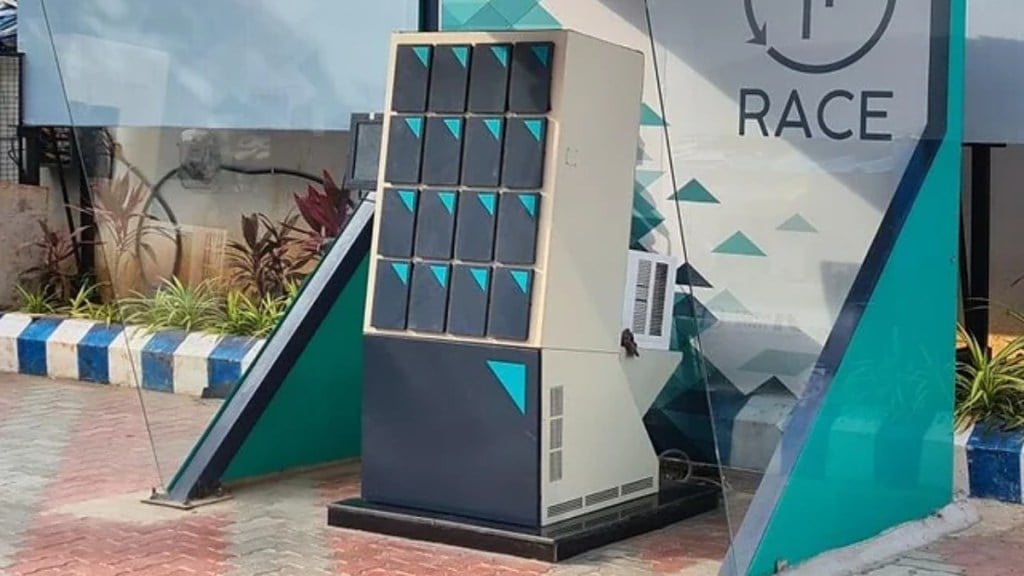By: Arun Sreyas, Co-Founder, RACEnergy
In recent years, there has been a growing interest in electric vehicles (EVs) and their potential to revolutionise the way we travel. While the adoption of electric two-wheelers on the road is beginning to increase, it still lags behind the number of Internal Combustion Engine (ICE) vehicles. This is particularly important for a country like India, where nearly 80% of vehicles on the roads are two-wheelers, making it undoubtedly the world’s largest untapped EV market in this segment.
Recent increases in petrol prices have further highlighted the advantages of electric two-wheelers. Their running cost is just ₹0.35 per km, significantly lower compared to ₹2.20 for petrol-powered ones. This translates into savings of about ₹100 per day for someone driving approximately 50 km daily. Thus, electric two-wheelers offer highly cost-effective operation costs per kilometre. Consequently, the end-user economics work out favourably in the long run, with lower ownership costs and a higher value proposition.
It’s a no-brainer that 100% of the 2-wheelers sold in the B2B segment should be electric, but that’s not the case. Why? Let’s dig deeper.
If we take a look at the two-wheeler market in India, it is broadly split into private and commercial with the former holding the larger share. We need to realise a crucial truth: there is a vast difference in usage patterns between private and commercial users. Private users travel an average of about 10km per day. For them, battery charging makes sense, as they travel shorter distances and can find charging stations within their network of travel. In contrast, commercial users cover much longer distances, averaging between 100-150 km per day, requiring longer ranges for last-mile mobility. This means that EVs with a range of 70 km or less are not suitable for commercial users, as they would need to be recharged multiple times per day.
Here’s how we can solve this problem for commercial riders by leveraging a highly cost-effective solution like battery swapping. This would be more viable to them as they can swap out their depleted batteries with fully charged ones – saving time and enabling them to cover greater distances. This technology is particularly advantageous for delivery apps such as Swiggy and Zomato, where time and efficiency are crucial. With this untapped opportunity, why hasn’t the entire delivery fleet segment shifted to electric yet?
Although electric two-wheelers are available in the market, their viability for end users is hindered as there are not enough charging stations to support them. This makes it difficult for businesses to switch to electric, as they cannot rely on a consistent supply of vehicles or charging infrastructure. While charging points can be set up at public places such as markets or restaurants, it is not entirely practical for the user and logistics involved. With battery swapping, however, a driver can swap their battery within minutes, eliminating the waiting time required for charging. The vehicles will additionally have more mileage which is advantageous for a commercial user.
Today, the micro-mobility space (with companies like Yulu) relies on battery swapping as a core element of operations, which serves as a testament to the technology’s effectiveness in the commercial two-wheeler market. This sector benefits from a swapping play primarily because the range offered by a fixed battery vehicle never crosses 100% of the requirement of a commercial driver.
While the entire B2B industry hasn’t fully transitioned to electric yet, there is tremendous potential for this sector to embrace green mobility and make the shift towards a more sustainable future. By addressing the challenges of supply and range, the industry can unlock the benefits of an electric transition. It is quite evident: the fuel of tomorrow is a swappable battery.
Disclaimer: Views expressed are personal and do not reflect the official position or policy of Financial Express Online. Reproducing this content without permission is prohibited.



















